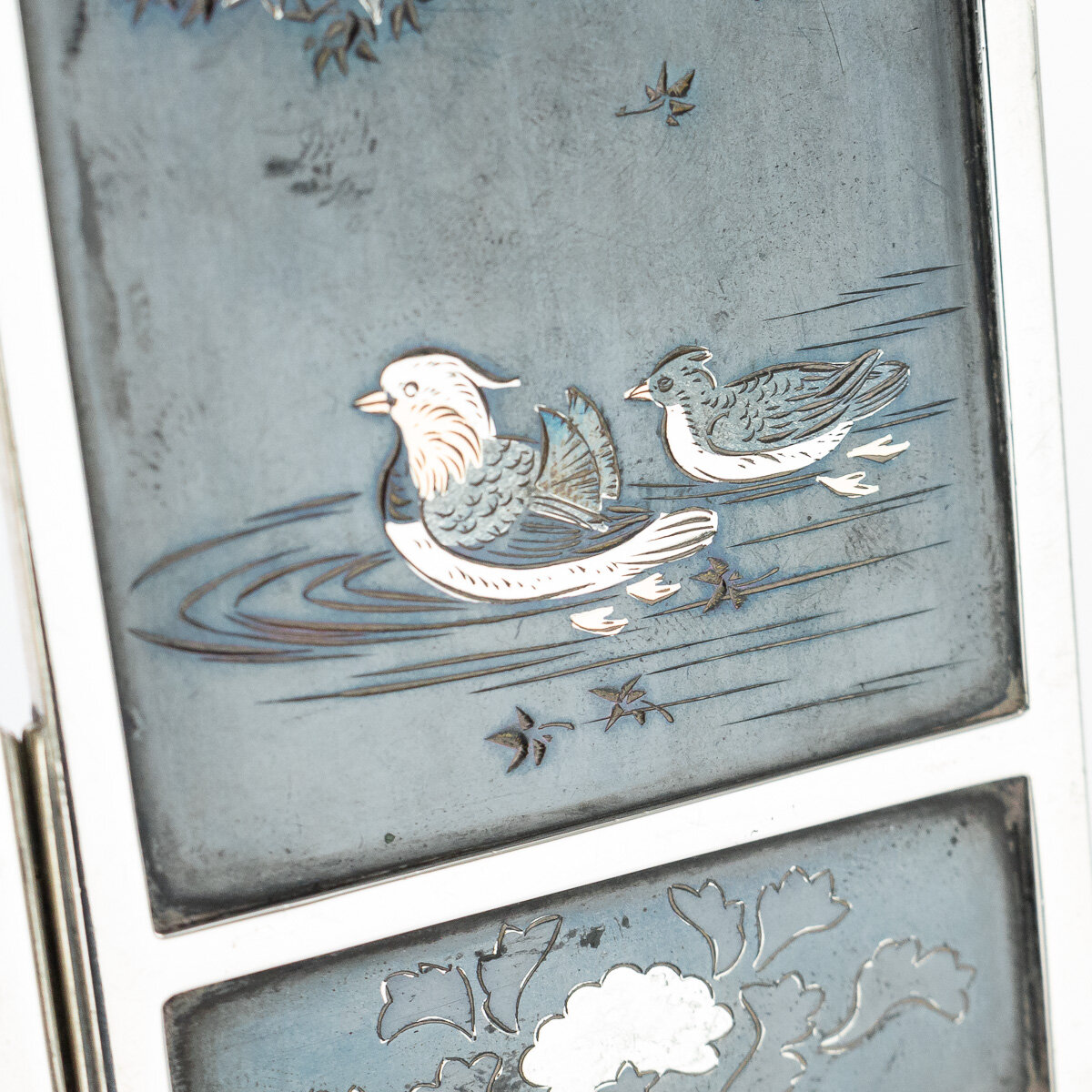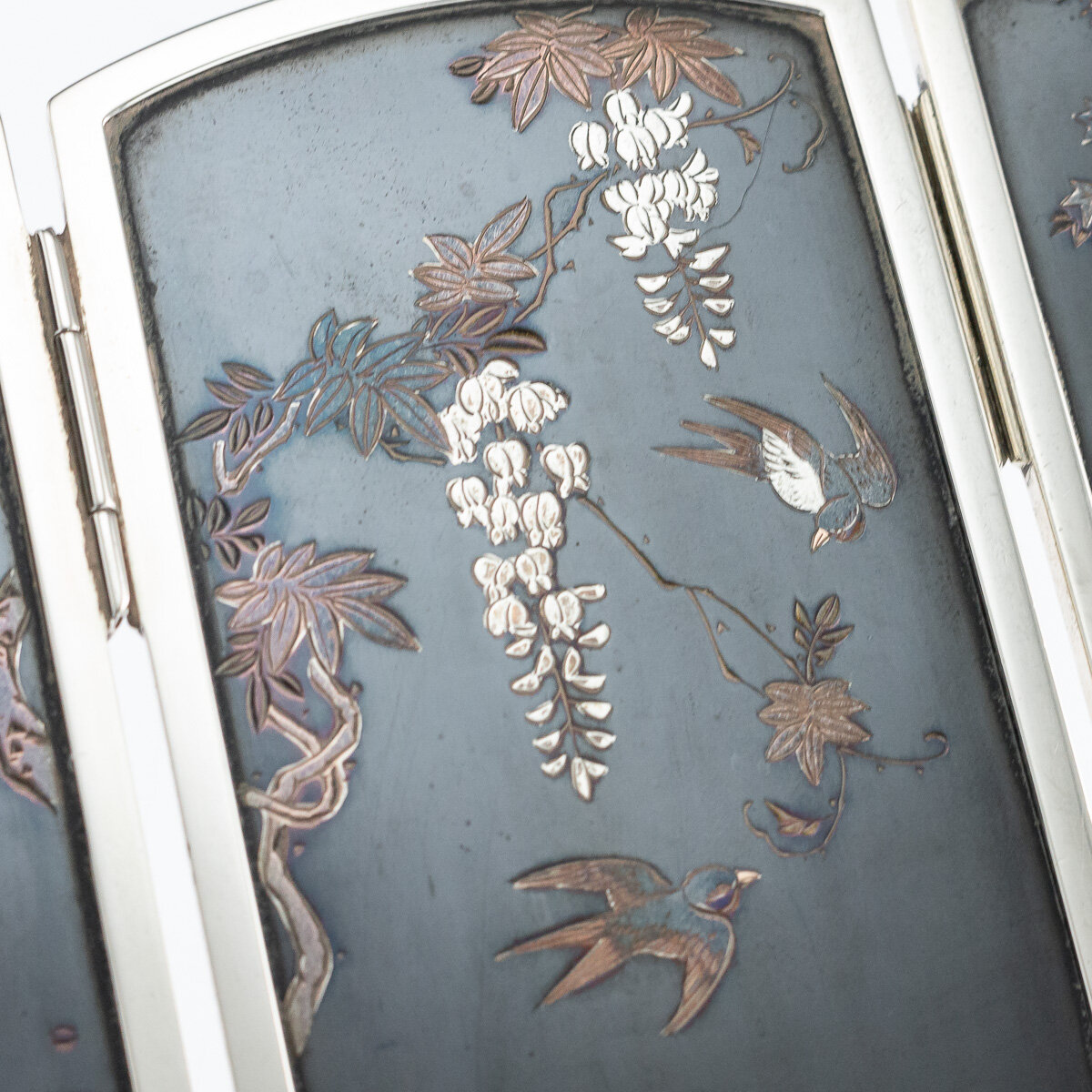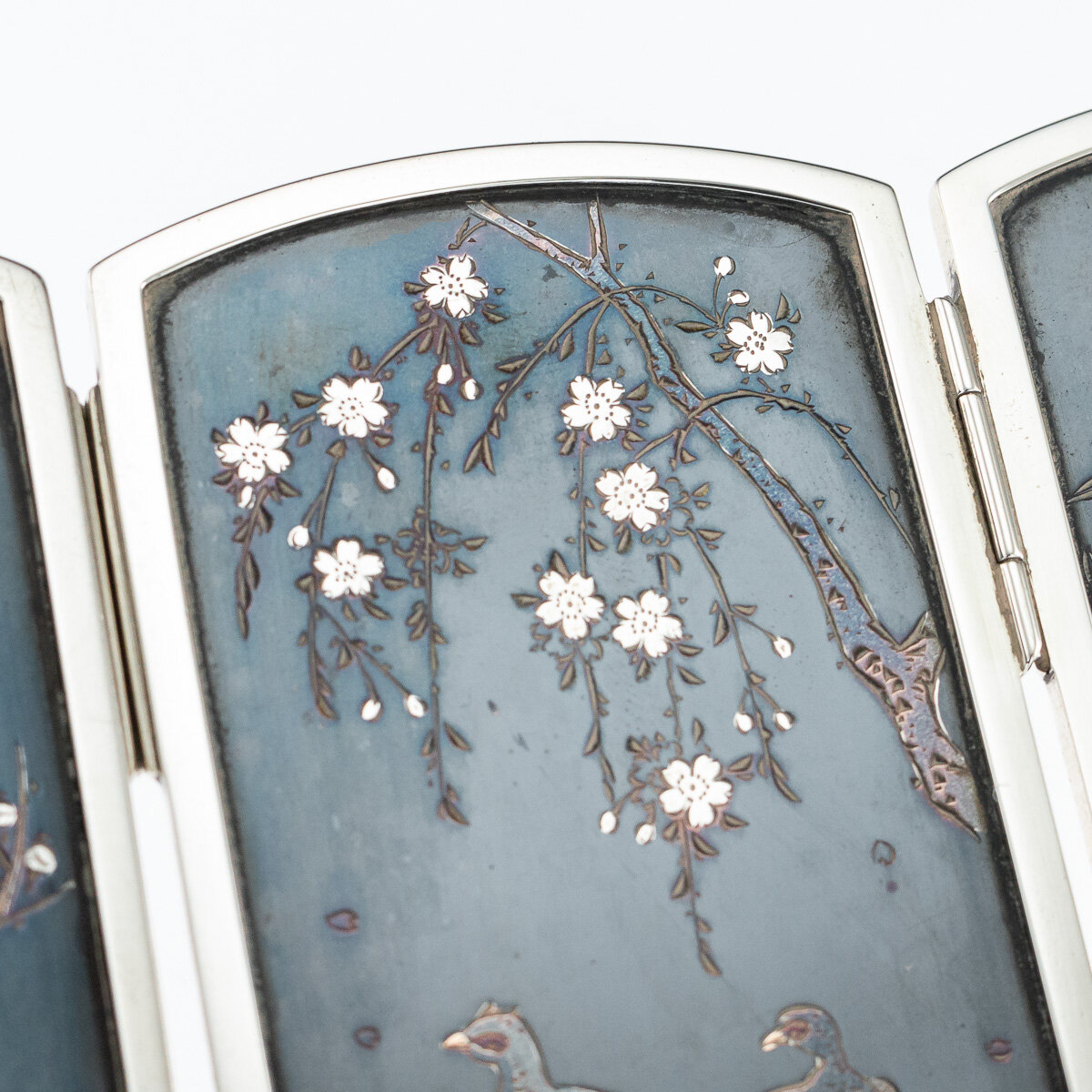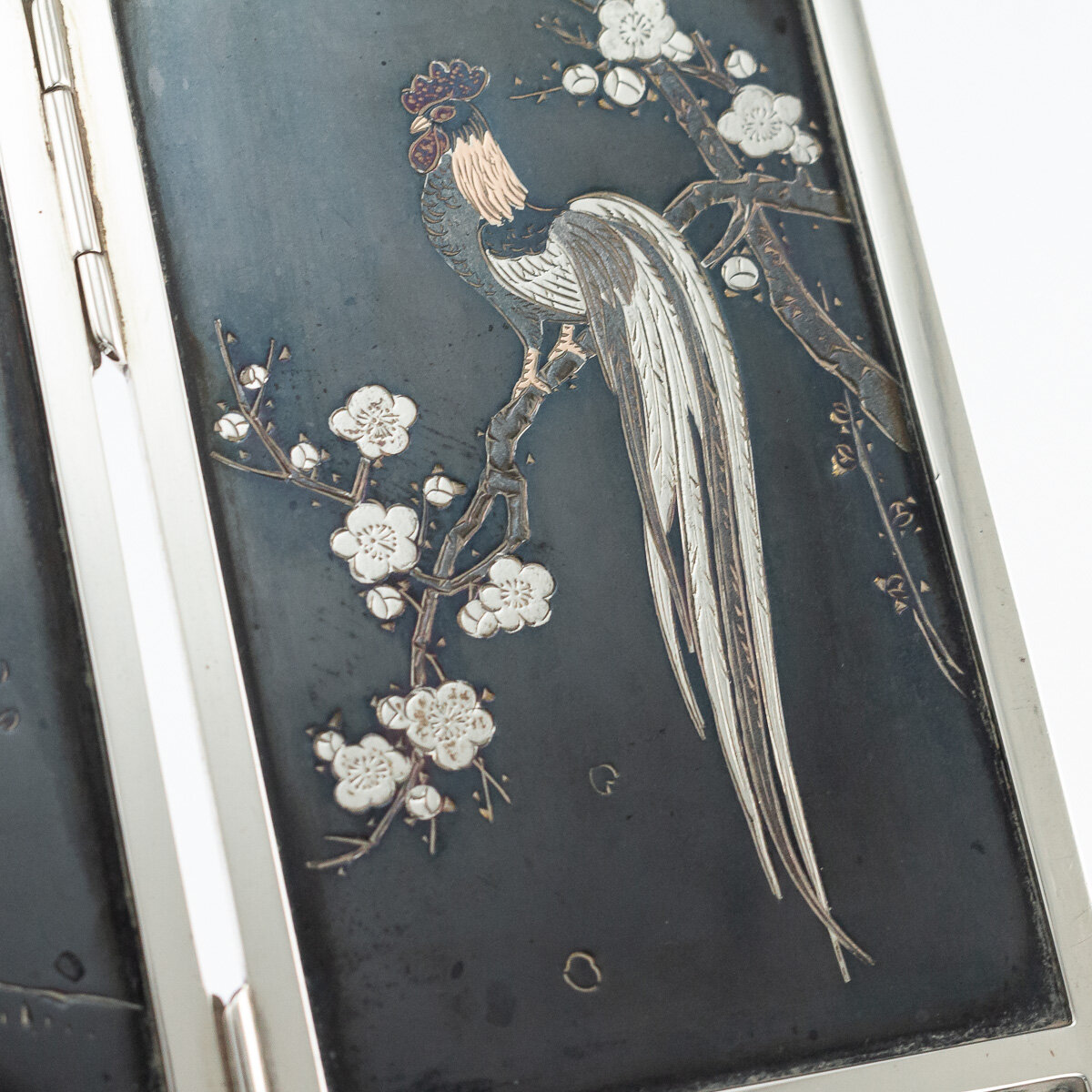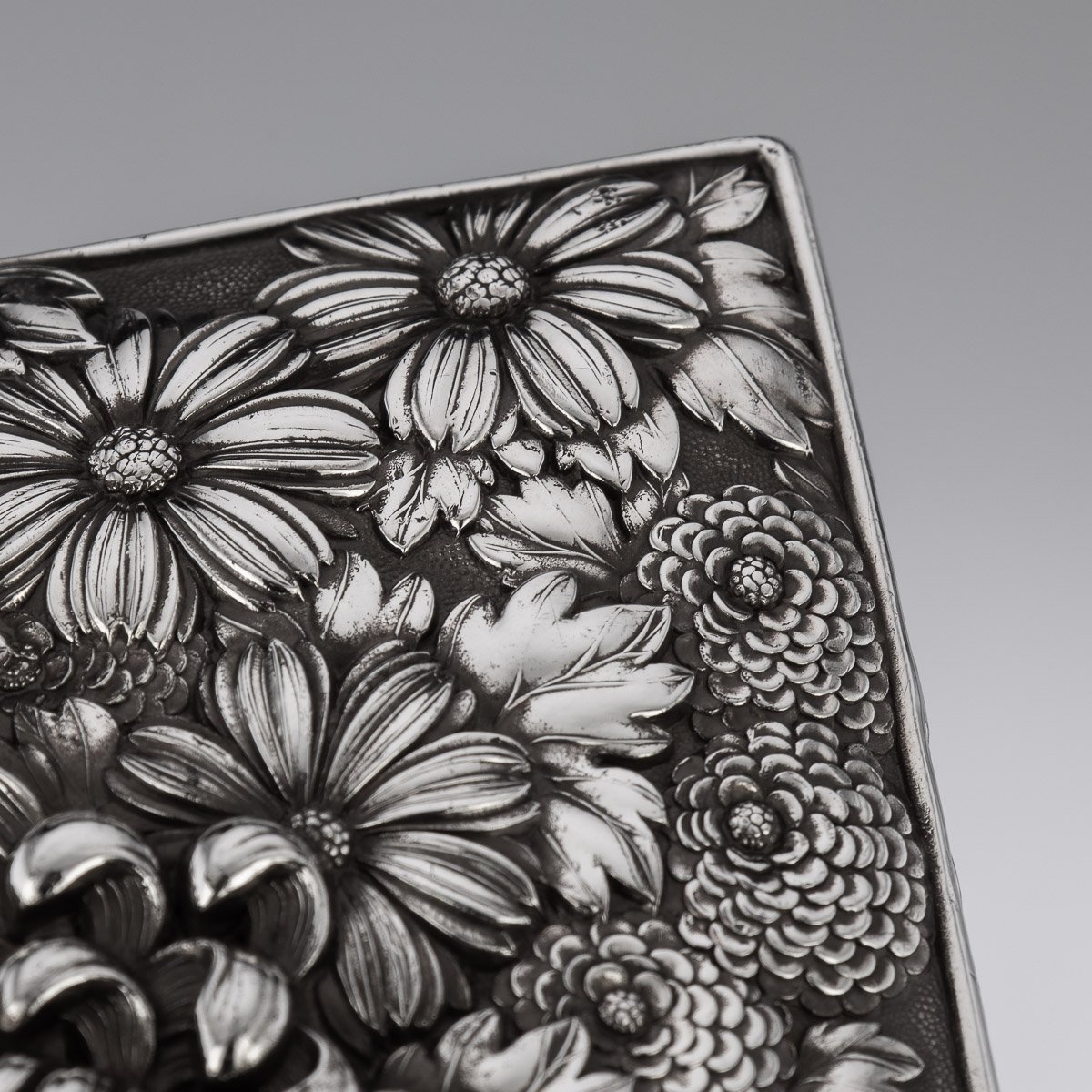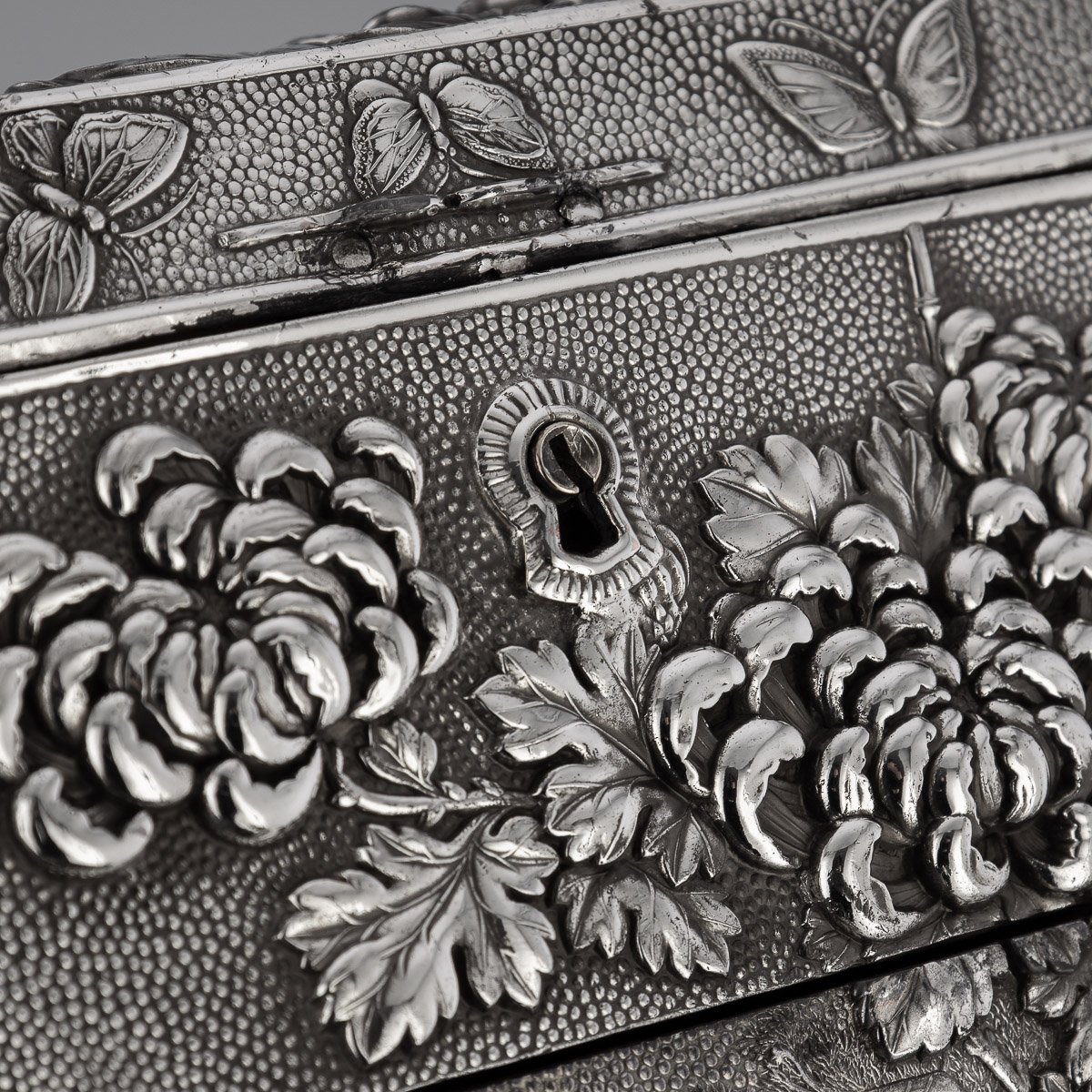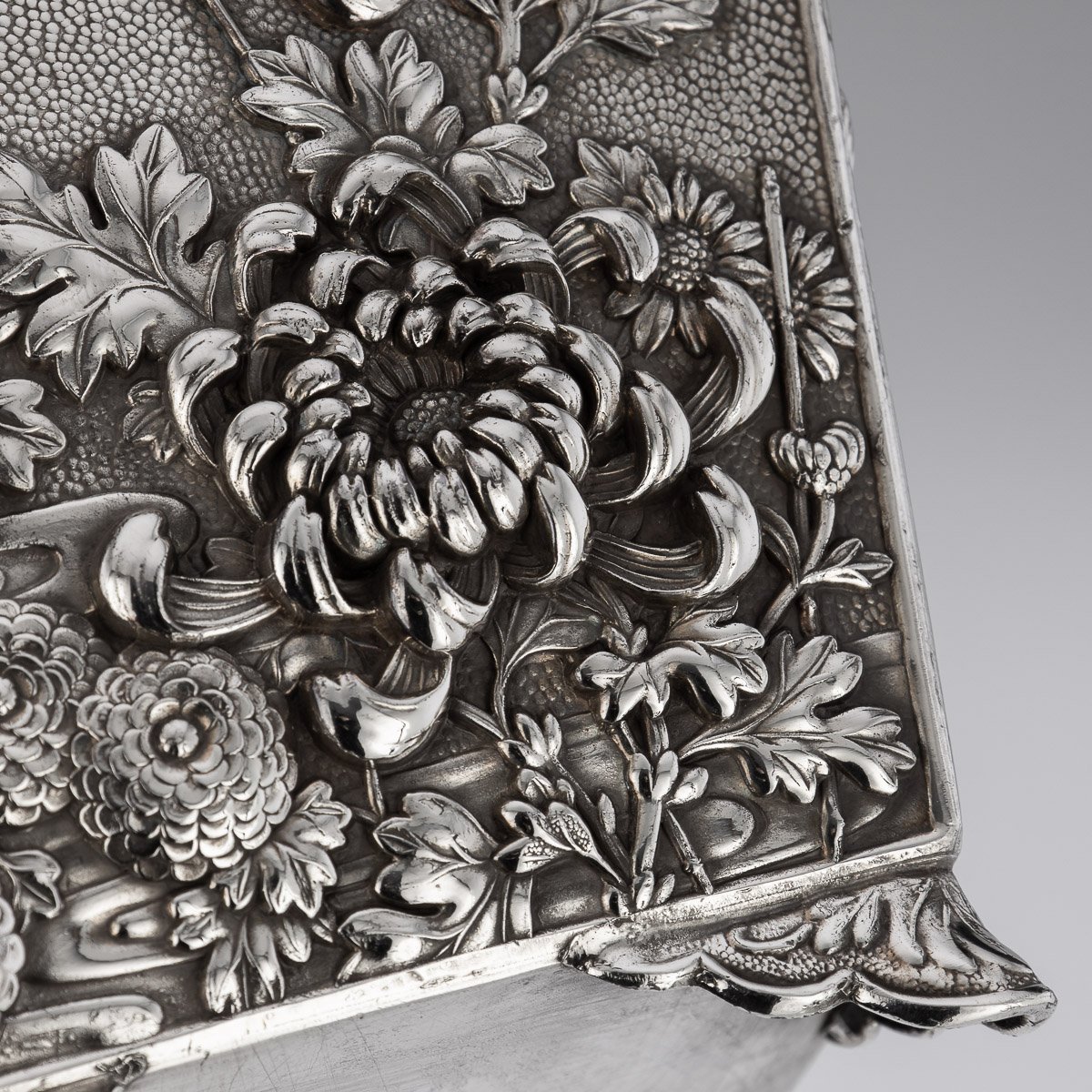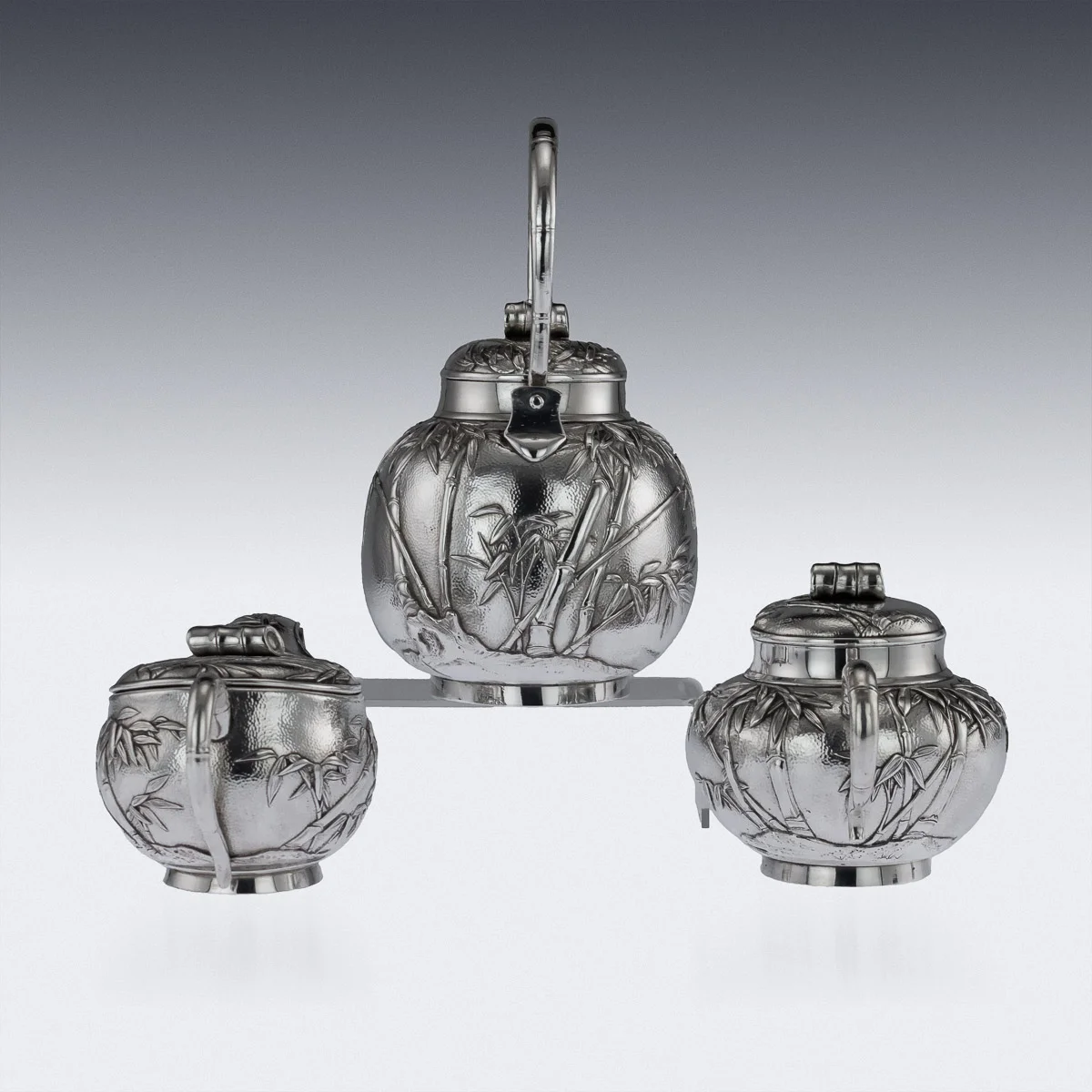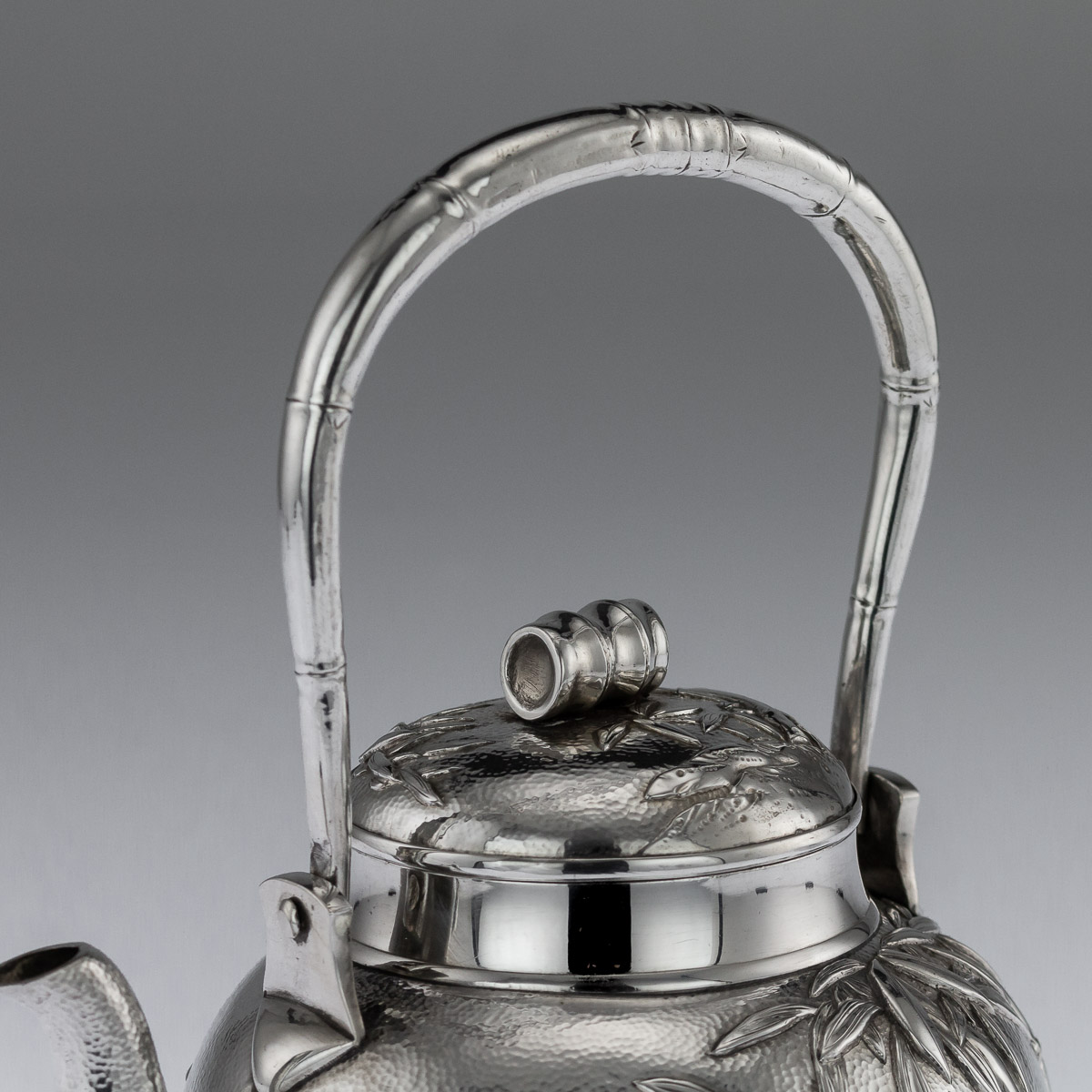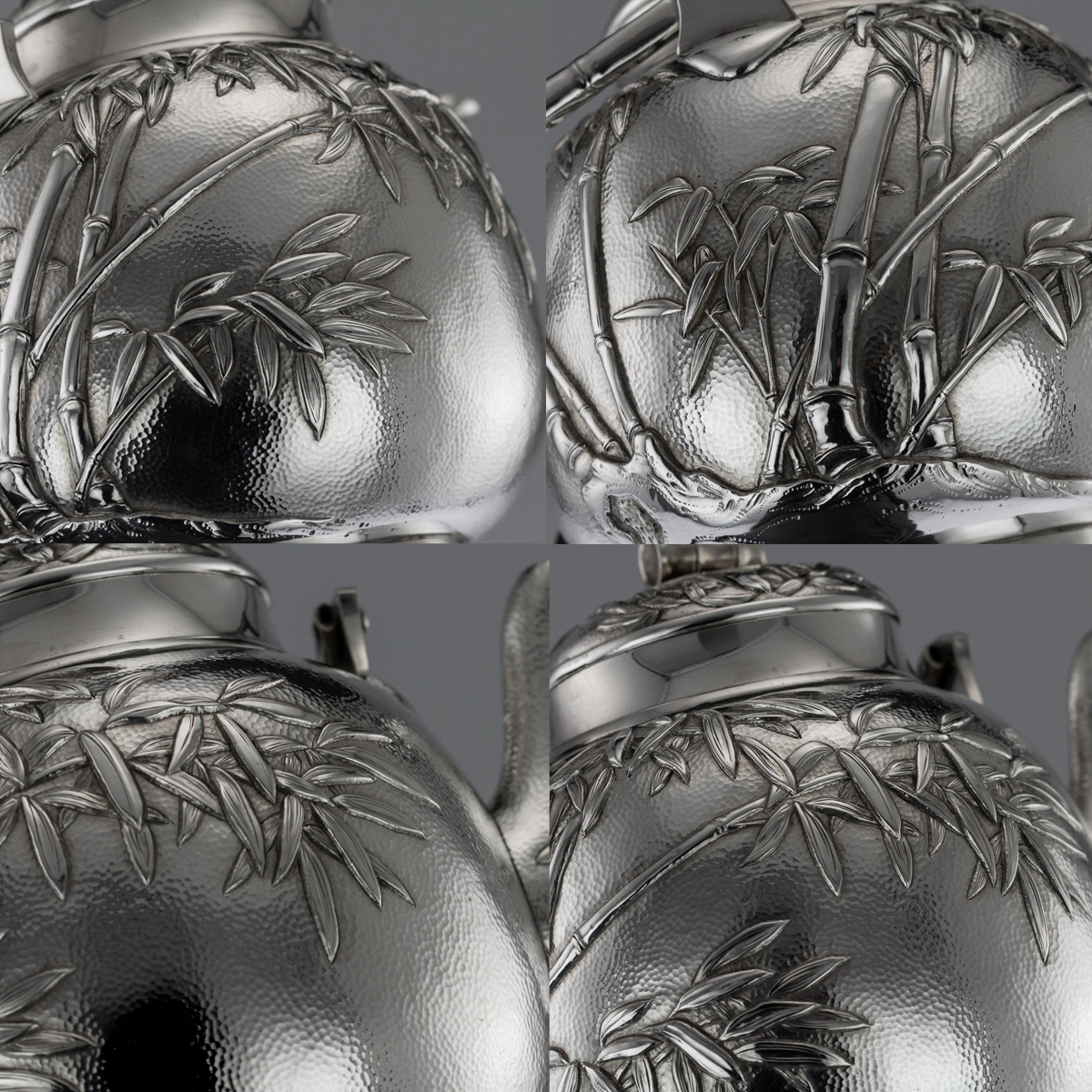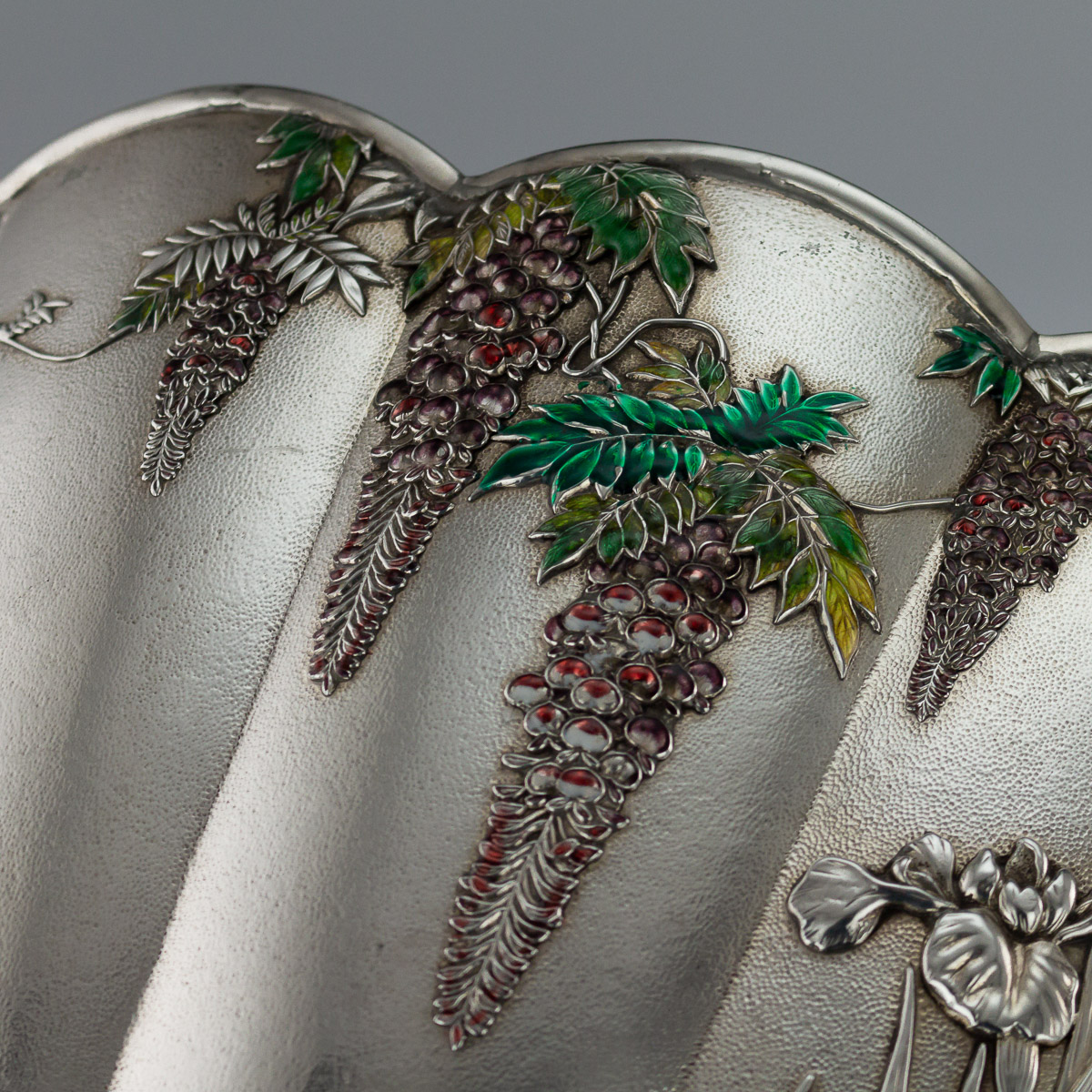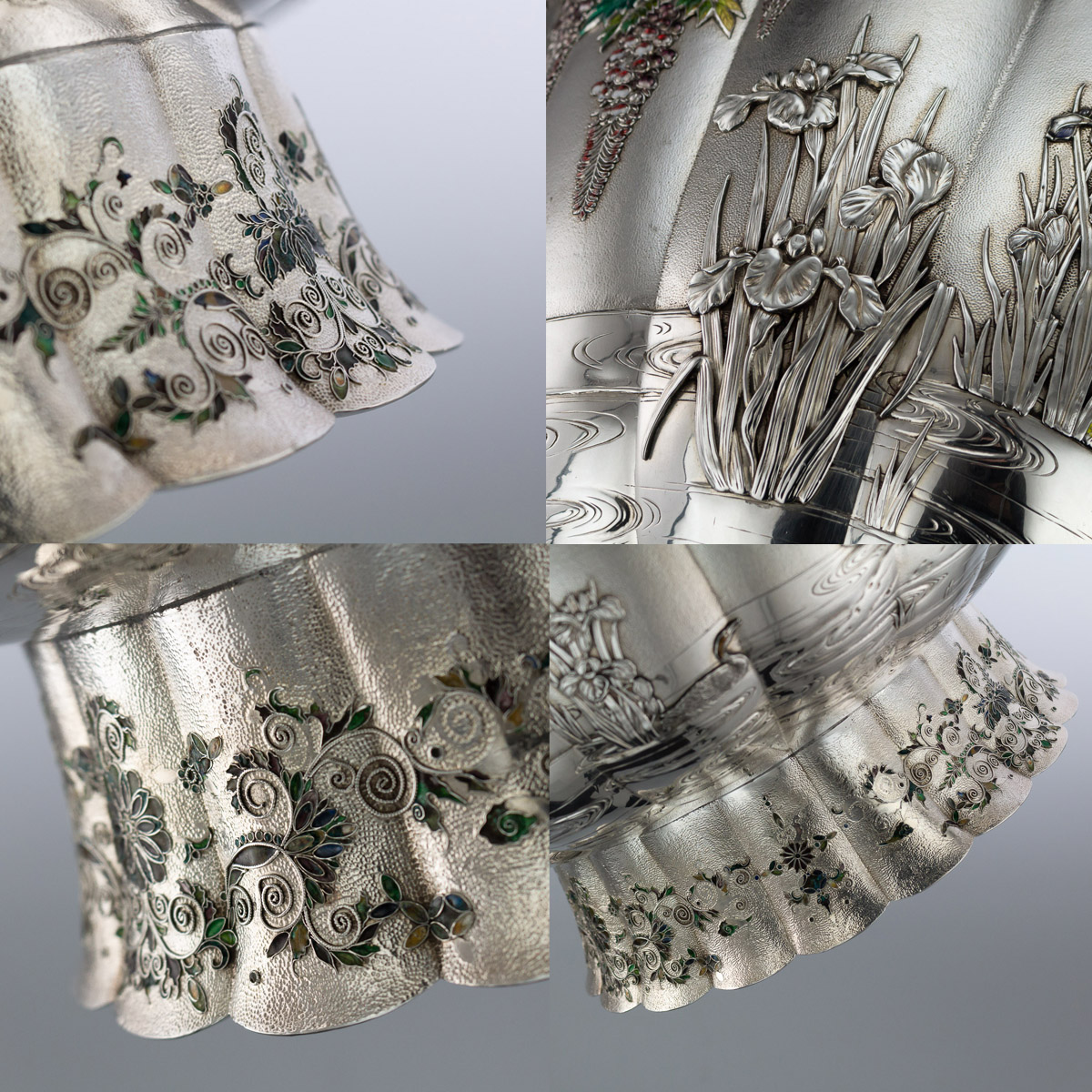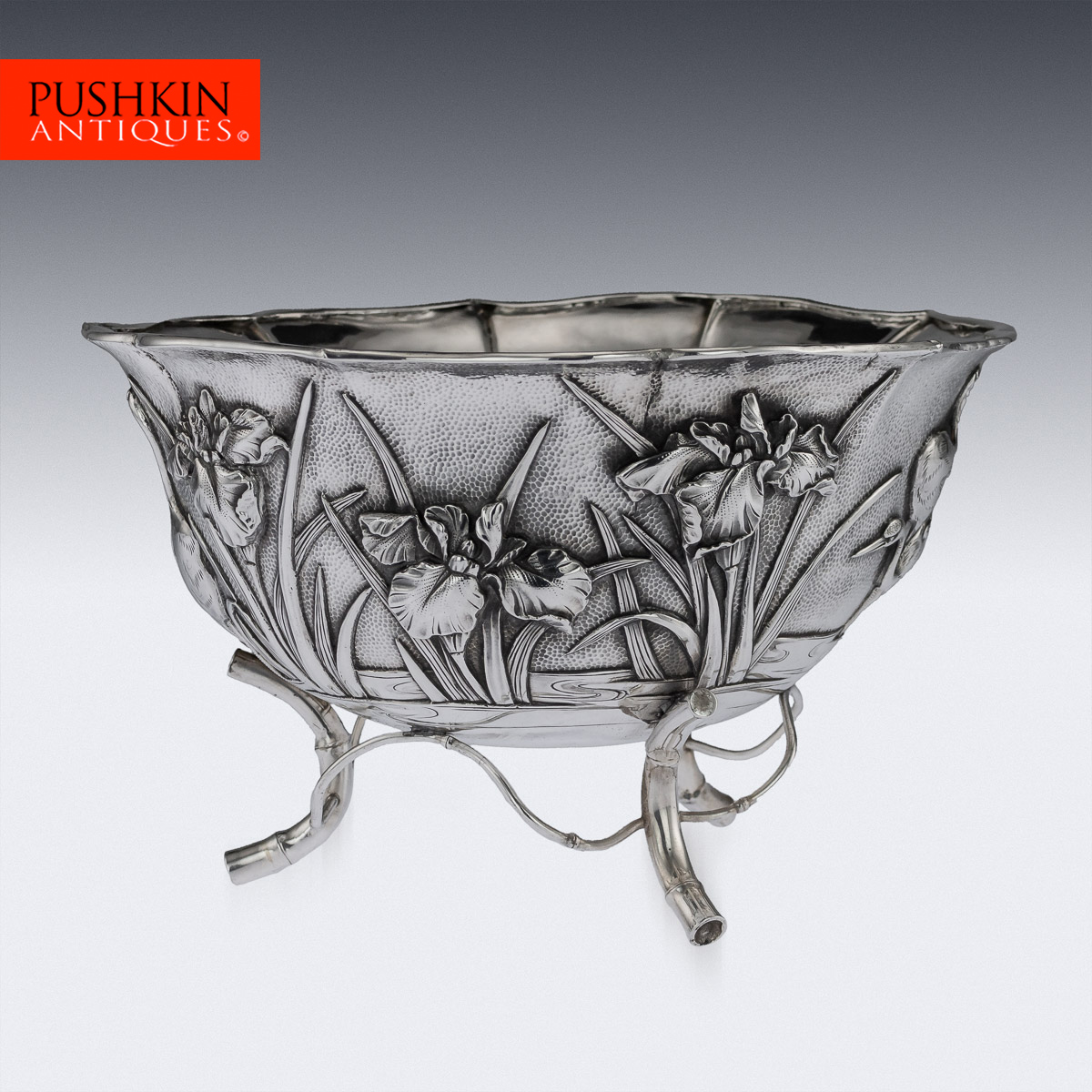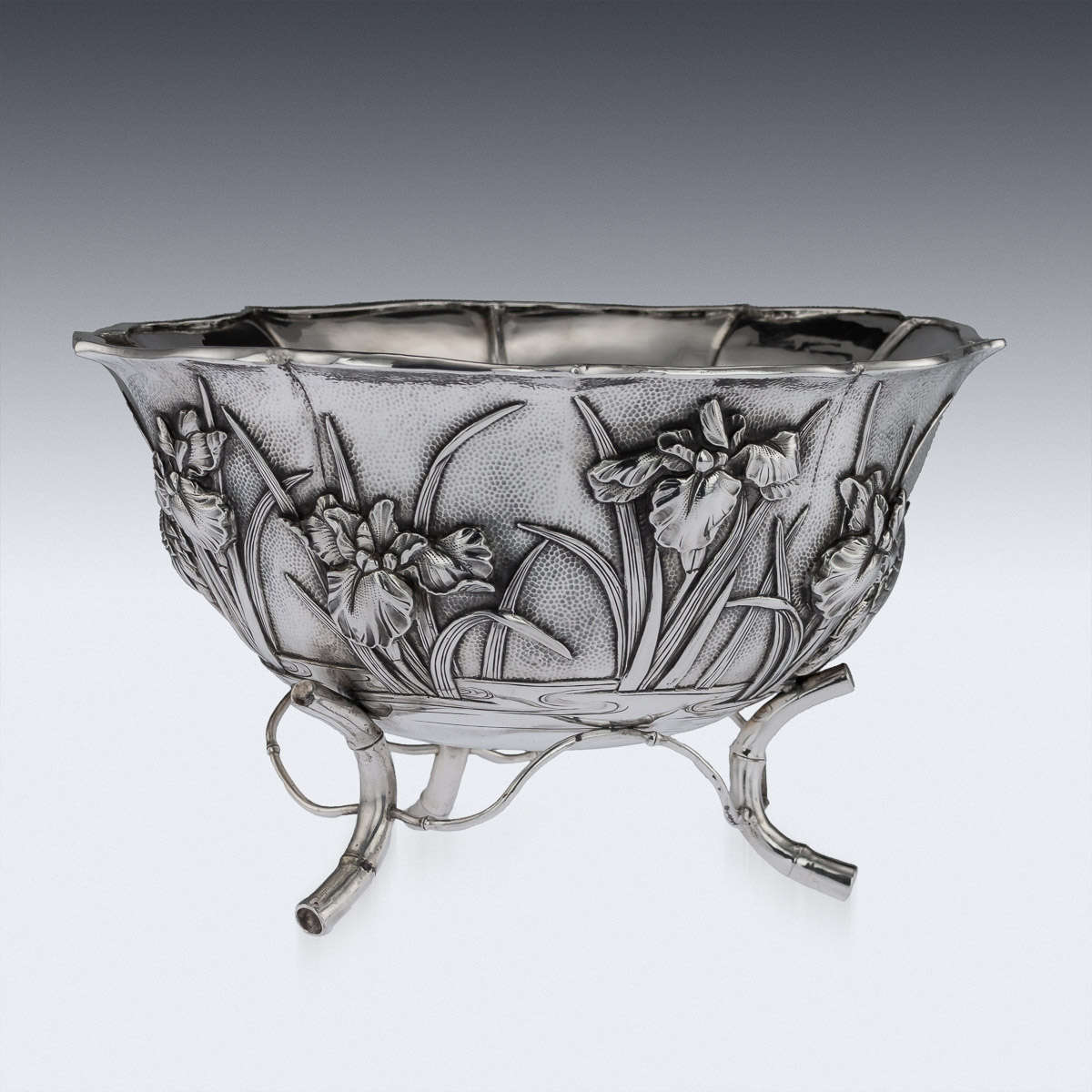 Image 1 of 16
Image 1 of 16

 Image 2 of 16
Image 2 of 16

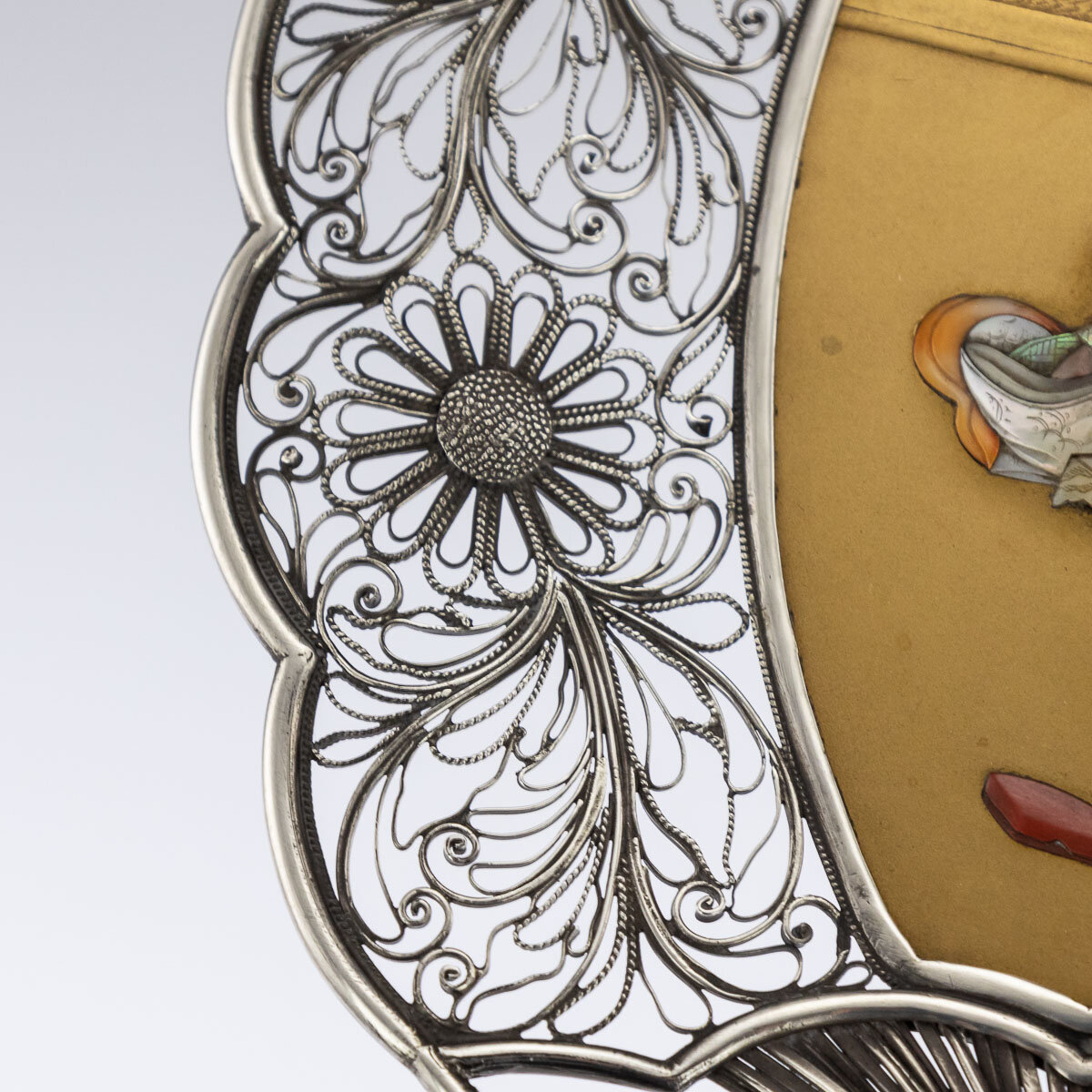 Image 3 of 16
Image 3 of 16

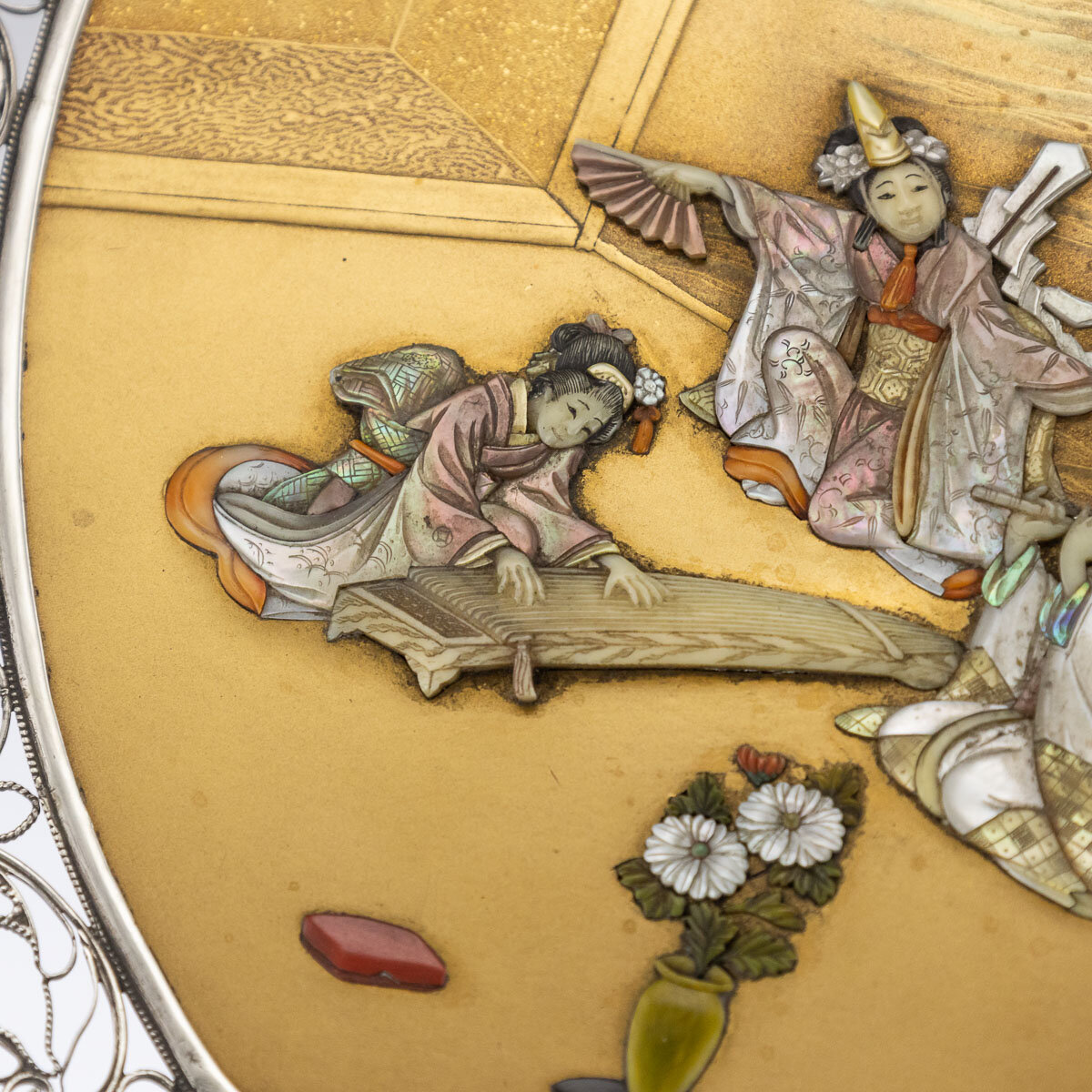 Image 4 of 16
Image 4 of 16

 Image 5 of 16
Image 5 of 16

 Image 6 of 16
Image 6 of 16

 Image 7 of 16
Image 7 of 16

 Image 8 of 16
Image 8 of 16

 Image 9 of 16
Image 9 of 16

 Image 10 of 16
Image 10 of 16

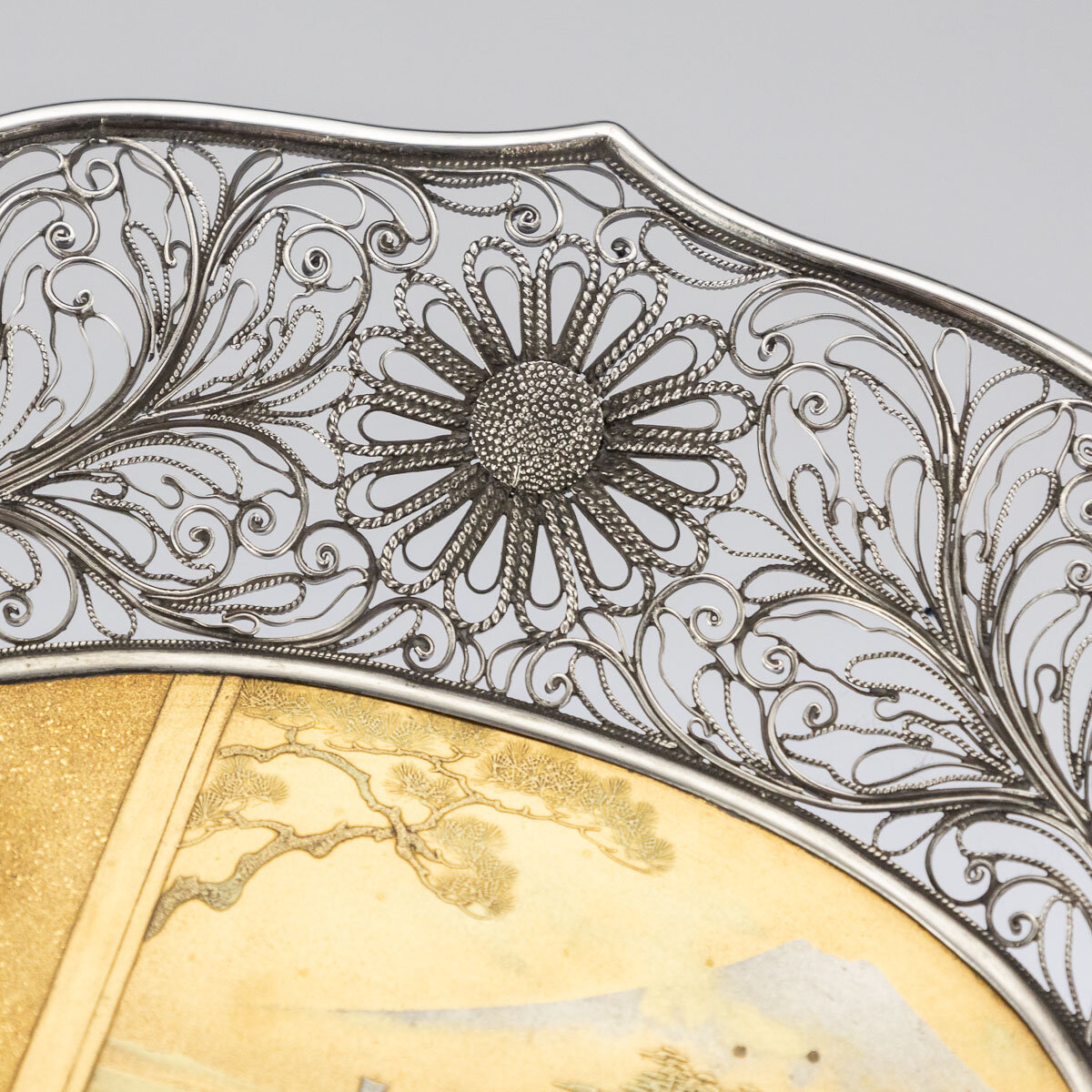 Image 11 of 16
Image 11 of 16

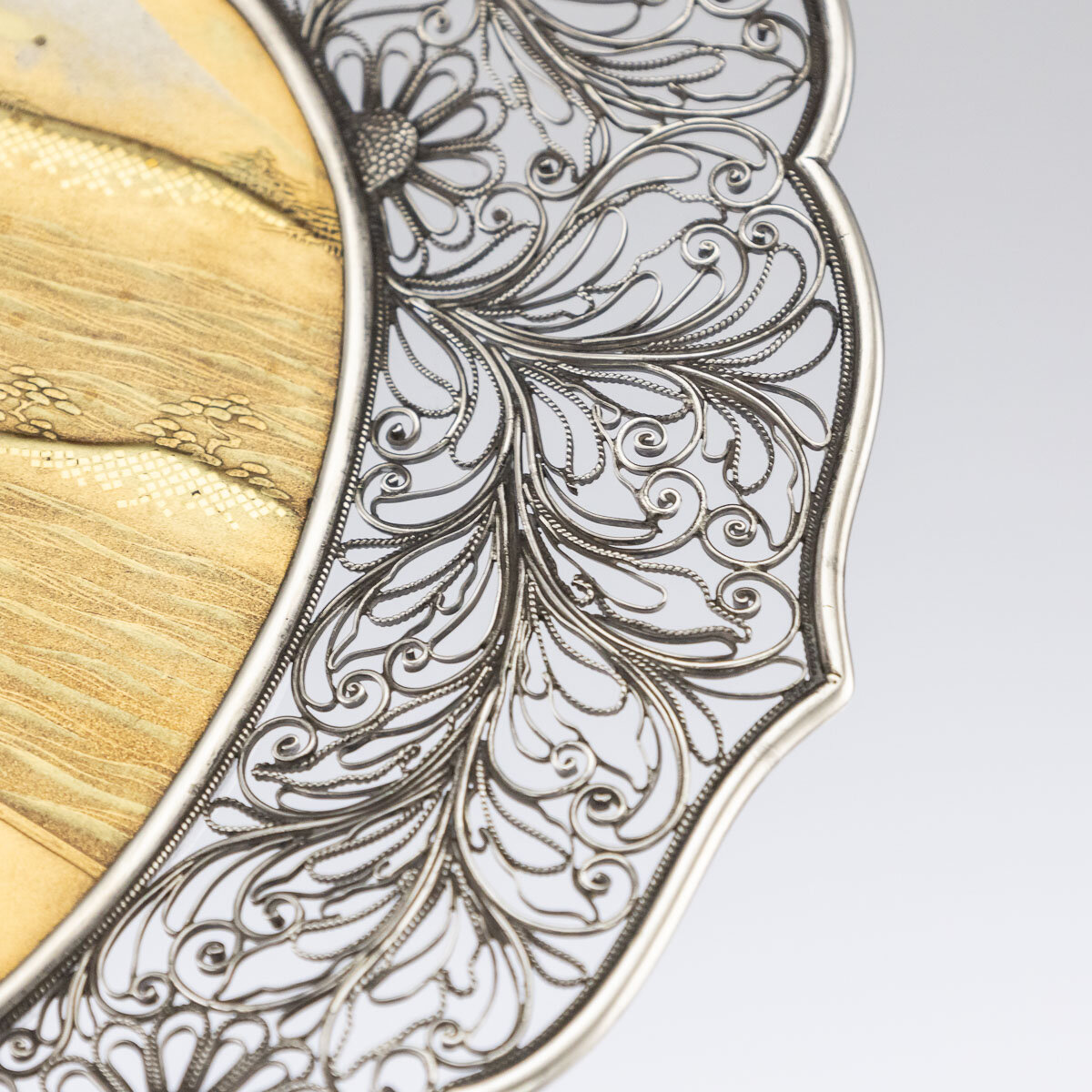 Image 12 of 16
Image 12 of 16

 Image 13 of 16
Image 13 of 16

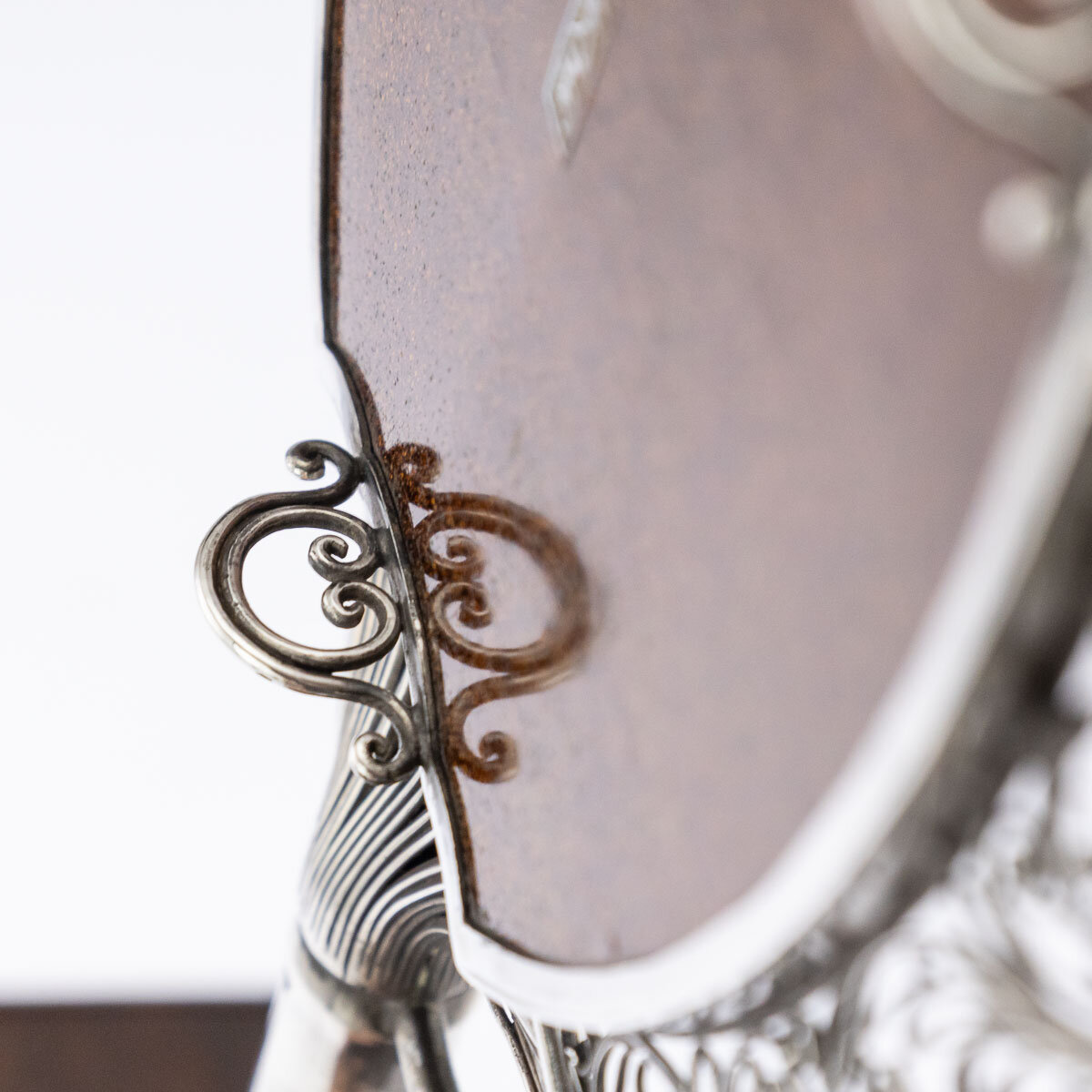 Image 14 of 16
Image 14 of 16

 Image 15 of 16
Image 15 of 16

 Image 16 of 16
Image 16 of 16

















ANTIQUE 19thC JAPANESE SOLID SILVER MOUNTED SHIBAYAMA FAN ON STAND c.1890
19th Century Japanese Meiji period solid silver mounted shibayama fan on stand. Of traditional Japanese fan-shape, with a central gold lacquer roundel inlaid in mother of pearl and coral with a three beautiful geisha dancing.
The piece dates to the Meiji period (1890-1912), acid tested shows a 950+ silver standard, signed Houn.
Reference Number: A6386
19th Century Japanese Meiji period solid silver mounted shibayama fan on stand. Of traditional Japanese fan-shape, with a central gold lacquer roundel inlaid in mother of pearl and coral with a three beautiful geisha dancing.
The piece dates to the Meiji period (1890-1912), acid tested shows a 950+ silver standard, signed Houn.
Reference Number: A6386
DESCRIPTION
Antique late-19th Century Japanese Meiji period solid silver mounted shibayama fan on stand. Of traditional Japanese fan-shape, with a central gold lacquer roundel inlaid in mother of pearl and coral with a three beautiful geisha dancing, playing koto and flute in an interior rendered in black hiramaki-e (Japanese lacquerwork, gold decoration in low, or “flat,” relief), togidashi (In this technique, the design is painted in lacquer, and gold or silver powder is sprinkled over it), oki-birame (for this kind of ground decoration, small, irregularly shaped flakes of sheet gold or silver are used) on a kinji ground (In this kind of ground decoration, a thick layer of fine gold or silver grains is dusted onto a freshly lacquered surface and, when dry, covered with a clear lacquer). The central panel surrounded by openwork filigree scrollwork depicting chrysanthemums and floral scrolls, the underside of the central roundel lacquered in nashiji (form of maki-e (q.v.) that is frequently employed for the background of a pattern. Gold or silver flakes called nashiji-ko are sprinkled onto the surface of the object). The fan mounted on a removable wooden plinth. The piece dates to the Meiji period (1890-1912), acid tested shows a 950+ silver standard, signed Houn.
CONDITION
In Great Condition - No Damage.
SIZE
Height: 35cm
Width: 21.5cm
Weight: 585g




